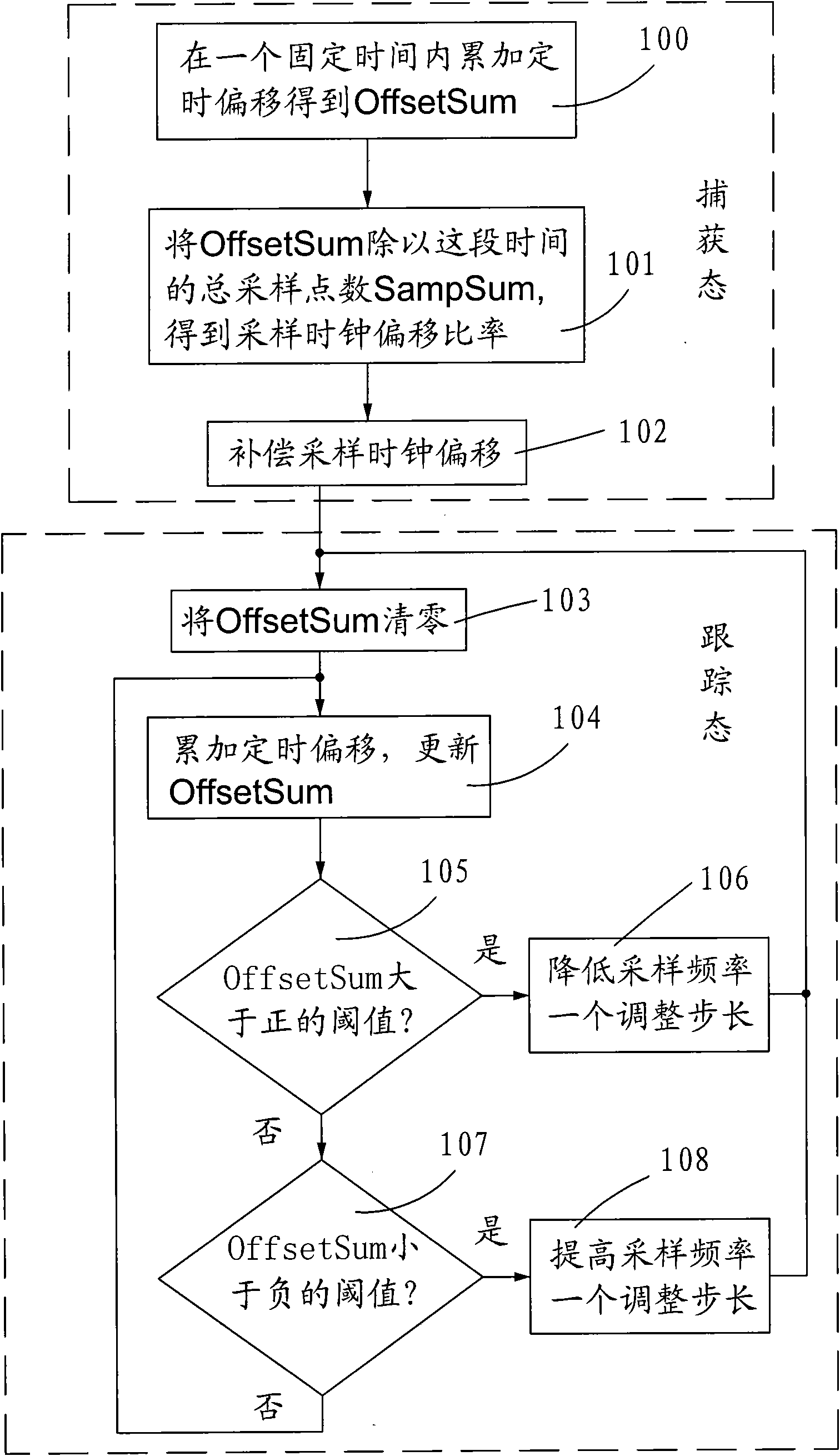Method for estimating sampling clock skew based on orthogonal frequency division multiplexing system
A sampling clock and orthogonal frequency division technology, applied in the field of digital signal transmission, can solve problems such as insufficient stability and complex calculation methods, and achieve the effect of reducing implementation complexity, high estimation accuracy and stability
- Summary
- Abstract
- Description
- Claims
- Application Information
AI Technical Summary
Problems solved by technology
Method used
Image
Examples
Embodiment Construction
[0019] In the OFDM receiving system, there is generally a symbol timing synchronization module to calculate the offset of the starting position of the OFDM symbol and perform compensation. In the capture state (a fixed period of time), the offset of the starting position of the OFDM symbol calculated by the symbol timing synchronization module (a positive value indicates that the timing is ahead, and a negative value indicates that the timing is behind) is accumulated to calculate this period of time The total offset points OffsetSum of the starting position of the OFDM symbol are divided by the total sampling points SampSum during this period to obtain the offset ratio of the sampling clock (a positive value indicates that the sampling clock is too fast, and a negative value indicates that the sampling clock is skewed). Slow), use it to compensate the sampling clock, and clear OffsetSum to zero.
[0020] Then it enters the tracking state of sampling clock offset estimation, a...
PUM
 Login to View More
Login to View More Abstract
Description
Claims
Application Information
 Login to View More
Login to View More - R&D
- Intellectual Property
- Life Sciences
- Materials
- Tech Scout
- Unparalleled Data Quality
- Higher Quality Content
- 60% Fewer Hallucinations
Browse by: Latest US Patents, China's latest patents, Technical Efficacy Thesaurus, Application Domain, Technology Topic, Popular Technical Reports.
© 2025 PatSnap. All rights reserved.Legal|Privacy policy|Modern Slavery Act Transparency Statement|Sitemap|About US| Contact US: help@patsnap.com

